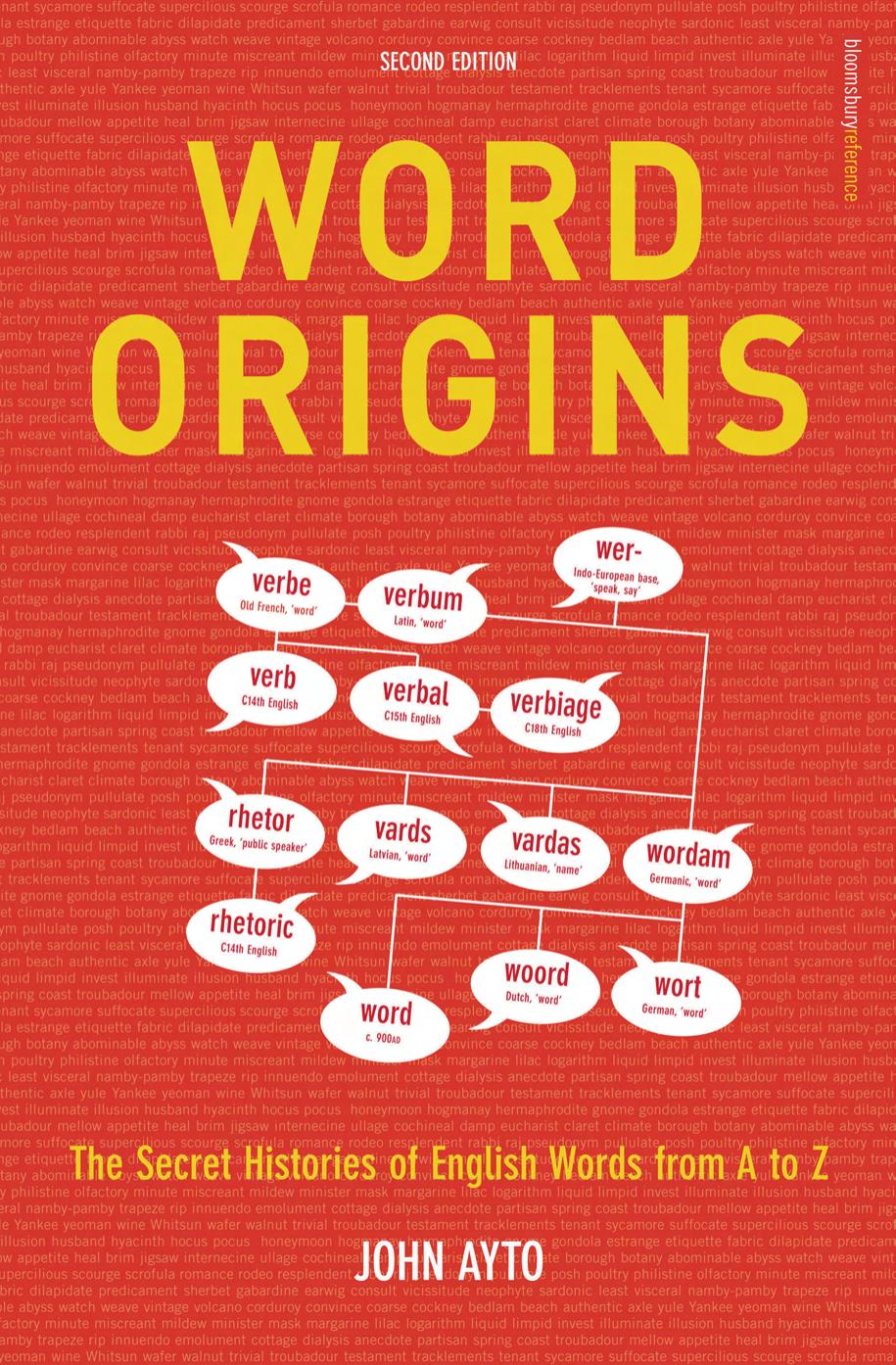Word Origins by John Ayto

Author:John Ayto
Language: eng
Format: epub, pdf
ISBN: 9780713674989
Publisher: Bloomsbury Publishing
Published: 2010-08-06T04:00:00+00:00
I
I [OE] Essentially all the Indo-European languages share the same first person singular pronoun, although naturally it has diverged in form over the millennia. French has je, for example, Italian io, Russian ja, and Greek eg. The prehistoric Germanic pronoun was *eka, and this has produced German ich, Dutch ik, Swedish jag, Danish jeg, and English I. The affirmative answer aye ‘yes’ [16] is probably ultimately the same word as I.
AYE, EGO
ibex see IVY
ice [OE] Ice is a widespread word among the Germanic languages – German has eis, for instance. Dutch ijs, and Swedish and Danish is – but beyond that its connections are somewhat dubious. Some of the more easterly Indo-European languages have or had similar-looking forms, including Old Iranian isu- ‘frosty, icy’, modern Iranian yak ‘ice’, and Afghan asa ‘frost’, which suggest the possibility of a common source.
Iceberg [18] was perhaps an adaptation of Danish and Norwegian isberg, literally ‘ice mountain’.
ichneumon [16] Ichneumon comes from a Greek word which meant literally ‘tracker’. This was ikhneúmn , a derivative of íkhnos ‘track, footstep’. Aristotle used it as the name for a species of wasp that hunted spiders, and it was adopted into English in this sense for the ichneumon fly, a wasplike insect with parasitic larvae, in the 17th century. Its original English application, however, was to a variety of African mongoose which ‘tracks down’ or hunts out crocodile eggs.
ichthyology see FISH
icicle icicle [14] Historically, icicle is a tautology, meaning literally ‘ice icicle’. It originated in Middle English as a compound of ice and ickel ‘icicle’. This word, which survived dialectally into the 20th century as ickle, goes back to Old English gicel, which in turn was descended from a prehistoric Germanic *jakulaz (source also of modern Icelandic jökull ‘glacier’).
icon [16] The etymological idea underlying icon is of ‘similarity’. It comes via Latin cn from Greek eikn, which was derived from a prehistoric base meaning ‘be like’. From ‘likeness, similarity’, eikn progressed semantically via ‘image’ to ‘portrait, picture’. That was the general sense in which English acquired the word (‘The Icon, or forme of the same birde, I have caused thus to bee figured’, John Bossewell, Workes of Armorie 1572), and it was not until the early 19th century that the particular application to a ‘sacred portrait in the Eastern Orthodox church’ entered the language.
iconoclast [17] The original iconoclasts were members of the Eastern Orthodox church in the 8th and 9th centuries AD who were opposed to the use or worship of religious images. In more extreme cases their opposition took the form of smashing icons (the word iconoclast comes via medieval Latin from medieval Greek eikonoklásts, a compound formed from eikn ‘icon’ and the verb klan ‘break’). The term subsequently came to be applied to extreme Protestants in England in the 16th and 17th centuries who expressed their disapproval of graven images (and popish practices in general) in similar ways. Its general use for an ‘attacker of orthodoxy’ dates from the early 19th century.
idea [16] Etymologically, an idea
Download
This site does not store any files on its server. We only index and link to content provided by other sites. Please contact the content providers to delete copyright contents if any and email us, we'll remove relevant links or contents immediately.
A Dictionary of Sociology by Unknown(3044)
The Art of Dramatic Writing: Its Basis in the Creative Interpretation of Human Motives by Egri Lajos(3037)
The Dictionary of Body Language by Joe Navarro(2969)
0041152001443424520 .pdf by Unknown(2812)
How The Mind Works by Steven Pinker(2776)
Day by Elie Wiesel(2746)
Merriam-Webster's Collegiate Thesaurus, Second Edition by Merriam-Webster Inc(2731)
The Meaning of the Library by unknow(2533)
The Official Guide to the TOEFL Test by ETS(2301)
A History of Warfare by John Keegan(2212)
The Emotion Thesaurus: A Writer's Guide to Character Expression by Puglisi Becca & Ackerman Angela(2126)
Emotion Amplifiers by Angela Ackerman & Becca Puglisi(2016)
MASTER LISTS FOR WRITERS: Thesauruses, Plots, Character Traits, Names, and More by Bryn Donovan(1922)
Merriam-Webster's Pocket Dictionary by Merriam-Webster(1909)
The Cambridge Guide to English Usage by PAM PETERS(1889)
Star Wars The Rise of Skywalker The Visual Dictionary by Pablo Hidalgo(1865)
More Than Words (Sweet Lady Kisses) by Helen West(1836)
Lucky Jim by Kingsley Amis(1729)
American Accent Training by Ann Cook(1642)
